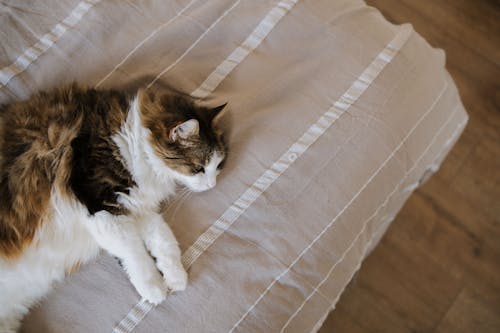Cat owners know all too well that springtime brings a shedding season where cat hair seems to cover everything—from sofas to beds to clothing. It can feel like the hair is multiplying, making it nearly impossible to keep surfaces clean. This leads many cat owners to wonder: is there a way to keep cats off the bed and perhaps even the sofa? While it may seem like a challenging task, there are effective methods to prevent your cat from turning your bed into their personal resting space, especially during shedding season.
One of the most important steps in this process is to decide what boundaries you want to set for your cat. For many, keeping cats off the bed is enough, and allowing them access to the sofa is a reasonable compromise. After all, completely denying them cozy spots might leave your cat feeling left out or unimportant in their own home. So, focusing on keeping them off the bed while giving them other comfortable spaces is a good balance.

Training your cat to stay off the bed requires consistency. One key element is to make your cat understand that jumping on the bed will have negative consequences. For example, when you notice your cat attempting to get on the bed, immediately interrupt them. You can use a firm voice to startle them, followed by gently lifting them off the bed. A light tap on their bottom can serve as a gentle but clear warning that this behavior is not allowed. However, be careful not to hit them too hard, as cats are sensitive creatures and may hold a grudge if they feel mistreated. In some cases, they might even retaliate, creating further behavioral issues. The goal is not to scare or harm the cat but to create a strong association between the bed and undesirable consequences.
This process will require patience and repetition. It may take multiple attempts before your cat fully understands that jumping on the bed is not permitted. Every time you see your cat trying to climb onto the bed, act quickly to discourage the behavior. Over time, your cat will begin to associate the bed with something they should avoid.
Another effective tactic is to use deterrents that cats naturally dislike. Many cats are afraid of water, so a small spray bottle filled with water can be an effective tool. When your cat jumps onto the bed, a quick spritz of water will often be enough to deter them. Over time, they will associate the bed with this unpleasant experience and start to avoid it altogether. The key here is consistency. If your cat starts to think that they can occasionally sneak onto the bed without getting sprayed, they may develop a habit that’s harder to break. Consistency is crucial in forming the right associations in your cat's mind.

A third approach involves using scent-based deterrents. Cats are highly sensitive to smells, and there are certain odors they simply cannot stand. Spraying your bed with scents like citrus, vinegar, or even onions can make the bed far less appealing to your feline friend. Cats tend to avoid areas that have strong smells they dislike. However, this method does come with a downside: some of these scents may be unpleasant for humans as well. If you choose this route, be sure to pick a scent that you can tolerate, as it might linger in the bedroom.
Implementing these methods should help in reducing or completely eliminating your cat's presence on the bed. This will also drastically reduce the amount of cat hair that ends up on your sheets, allowing you to enjoy a cat-hair-free sleeping space. However, it’s important to remember that cats need their own spaces too. Instead of enforcing strict rules all over the house, it might be worth letting your cat have access to other comfortable areas like the sofa or a designated cat bed. Cats love soft, cozy spots, and by providing alternatives, you may make it easier for them to avoid your bed.
Every cat is different, so these methods may not work for every situation. Some cats are more persistent than others, and it may take a combination of methods to find what works best for you and your pet. Whatever method you choose, remember that patience and consistency are key in training your cat and maintaining harmony in your home.
